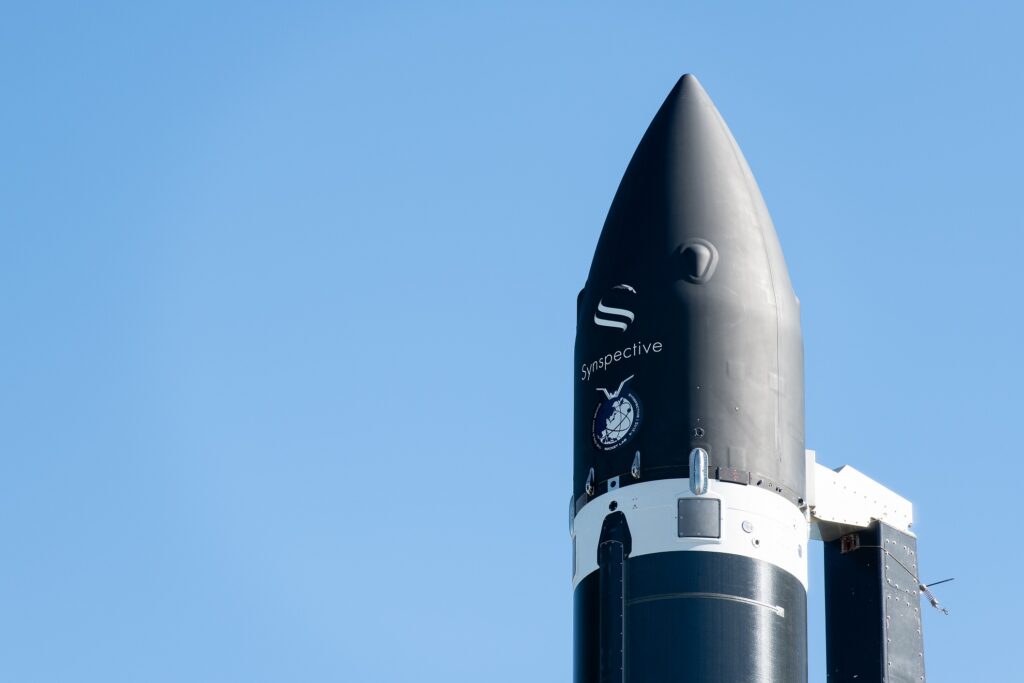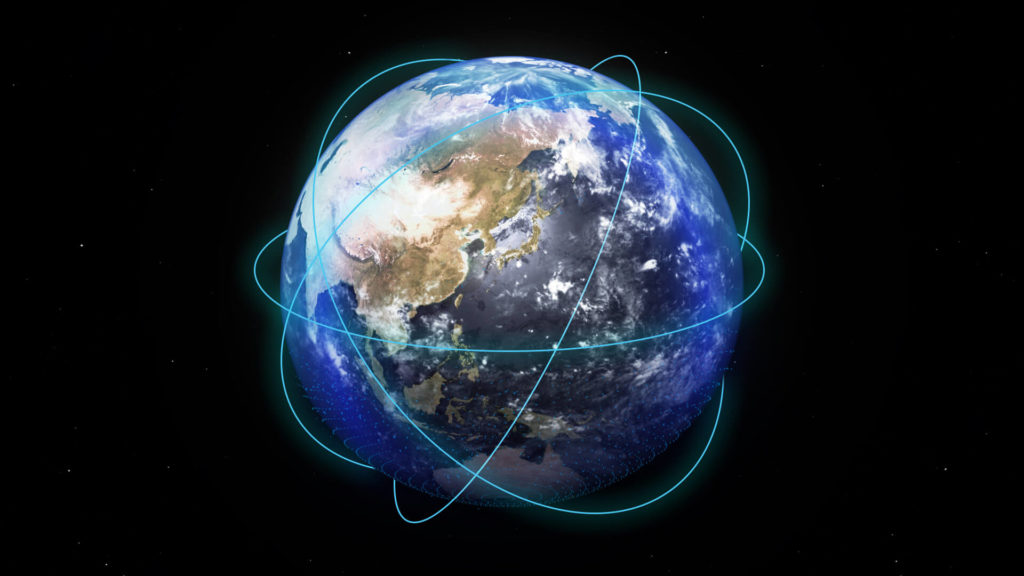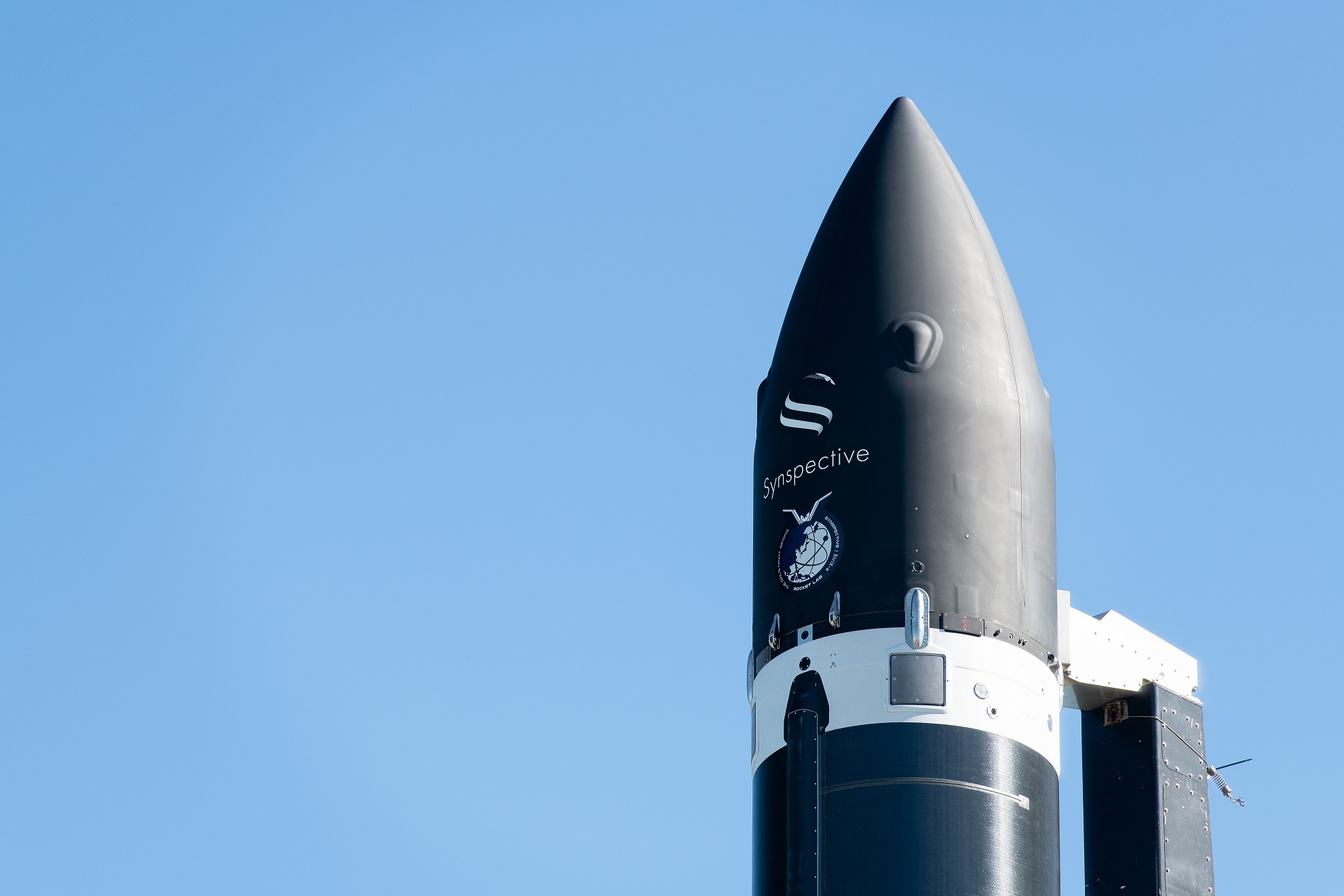
Rocket Lab Is About To Help Launch Extremely Accurate Earth Imaging Satellites
Over the past few years and especially now, more and more companies around the world are in need of different launch providers. For this reason among others, Rocket Lab has been consistently launching Electron and sending unique payloads into Earth’s orbit and beyond. In addition, this demand is only expected to grow significantly in the coming years.
Specifically, Rocket Lab has many upcoming launches for different companies such as the recent partnership with Synspective. This contract involves three separate launches with two expected to happen this year. Each launch will send a StriX satellite, developed to deliver imagery that can detect millimeter-level changes to the Earth’s surface from space. This is another important launch for Rocket Lab that was likely chosen due to Electron’s success, price, and control.
The process of measuring and imaging the Earth’s surface is a complex and important process. Synspective is working to build a large SAR constellation that will provide the company with accurate and consistent data. Here I will go more in-depth into what this launch entails, who is Synspective, and the purpose of these satellites.
Upcoming Launch

As we continue to see with Rocket Lab in recent years and months, the company is working with different customers looking to send unique payloads into orbit and beyond. This launch and contract with Synspective is no different. Late last year Rocket Lab tweeted saying, “Exciting news – we’re launching three dedicated Electron launches for @Synspective! We’re thrilled to welcome the Synspective team on board once again to continue growing their StriX synthetic aperture radar constellation.” In addition to this tweet, the company highlighted the mission along with their thoughts on the launch and more. Specifically, on December 7th, 2021, Rocket Lab announced it had signed a deal with Japanese Earth imaging company Synspective to carry out three dedicated Electron launches.
The first two missions are scheduled for lift-off from Rocket Lab Launch Complex 1 in 2022, with a third to follow in 2023. Each mission will deploy a single StriX satellite, growing Synspective’s synthetic aperture radar (SAR) constellation developed to deliver imagery that can detect millimetre-level changes to the Earth’s surface from space, independent of weather conditions on Earth and at any time of the day or night. These new missions follow on from Rocket Lab’s first launch for Synspective in December 2020. The mission, named ‘The Owl’s Night Begins’, saw Rocket Lab’s Electron launch vehicle deploy the StriX-α satellite. This was the first spacecraft in Synspective’s planned constellation of more than 30 SAR satellites designed to collate data of metropolitan centers on a daily basis to support urban development planning, construction and infrastructure monitoring, and disaster response. During ‘The Owl’s Night Begins’ mission Rocket Lab performed an advanced mid-mission maneuver with its Kick Stage to shield the StriX satellite from the sun to reduce radiation exposure ahead of payload deployment. The Kick Stage will once again perform the maneuver for the new upcoming missions. Once again the Kick Stage of Electron provides an invaluable property that helps separate the company from other options. In addition to this, a single StriX satellite fits perfectly within the fairings of Electron allowing them to purchase dedicated missions each time. After the success of the first launch, these three additional missions were scheduled. To be more specific, flying as a dedicated mission means the StriX satellites will be the only payload on board Electron, giving Synspective control over launch schedule and enabling specific LTANs not achievable when flying as one of many satellites on large rideshare missions.
Rocket Lab founder and Chief Executive, Peter Beck, mentioned, “We’re honored the Synspective team has once again chosen Electron to grow their StriX constellation. We recognize the importance of dedicated orbits and custom mission parameters for constellations, and we’re delighted to deliver a tailored launch and integration service to the Synspective team once again.” Not only this but Synspective founder and CEO, Dr. Motoyuki Arai, said, “It is a great honor to collaborate with Rocket Lab, which is evolving from a rocket venture pioneer to an experienced launch service provider with the successful Strix-α deployment to orbit. We are very grateful for their flexibility in accepting our requests on the satellite’s orbit and launch period. Synspective has already begun operating its first satellite and providing solution services, and is now entering a phase of business expansion. StriX-β, the second satellite following StriX-α, will demonstrate Interferometric SAR (InSAR) technology in orbit and deepen satellite-operation know-how, which are strengths in our business expansion. We will accomplish this mission and steadily achieve results to enhance global efficiency and resilience.” Based on the reactions and continued business between the two companies, assuming these upcoming missions go well, we can expect to see a lot more of these launches in the future as they continue to grow their constellation.
Synspective & StriX Overview

Now that we know more about the past and upcoming launches between Rocket Lab and Synspective, we can take a closer look at the satellites being launched and the company that created them. Synspective is working to try and create a Learning World where people can expand their capabilities and make tangible progress with new data and technologies. One of the ways they are attempting to do this revolves around the StriX satellite. The StriX satellite can target data with a ground resolution of 1-3m, single polarized (VV), and a swath width of more than 10-30km. The StriX observation modes are Stripmap and Sliding Spotlight mode and each satellite has an SAR antenna that is 5 meters in length and stowed during launch. In addition, a lot of work went into the simple design of the satellites, meant to allow for affordable development of the constellation. SAR or Synthetic Aperture Radar, is a vital component apart of these satellites. Specifically, SAR sends microwaves from the satellite to Earth and receives the reflected signal to create an image of the target area. The observation by the SAR enables twenty-four hour monitoring, even with cloud coverage, when optical earth observation satellites are less effective. The StriX satellites use X-band for precise monitoring. These features are suitable for the monitoring of the cities and infrastructures that are Synspective’s primary targets.
As I mentioned prior, this is the second launch with Rocket Lab after a first successful mission in late 2020. This initial mission was named StriX-α, while the upcoming launches are StriX-β. This specific mission will be launched into a one-day recurrent sun synchronous orbit making it possible to capture particular spots on the Earth at the same time and under the same conditions daily. In other words, the satellites will be able to acquire high-quality data to understand changes and trends at specific locations on the Earth’s surface. Following these launches, they plan to launch a commercial prototype satellite, StriX-1 (Strix One), later this year. By 2023, they will have six satellites in total, bringing them closer to a planned constellation of 30 satellites that enables wide-area, high-frequency Earth observation. They decided to name the upcoming mission The Owl’s Night Continues. The StriX satellite series derives its name from a parliament of owls. ‘Night’ demonstrates SAR’s capabilities to detect changes to the Earth’s surface, independent of weather conditions on Earth and at any time of day or night. The last word, ‘continues’, illustrates that this is the second satellite of many to come and Synspective’s presence in the skies keep expanding.
Lastly, Synspective highlights the future constellation ecosystem and what they plan to achieve. The future SAR satellite constellations are supported by ecosystem development, based on frequency, freshness, and high resolution. Synspective not only develops satellites, but also constructs an ecosystem. Suppliers provide us with inter-satellite networks or ground-based systems for satellite operations and data processing, all of which are to achieve the three keywords: frequency, freshness, and high resolution. In addition, the Synspective SAR has a simple configuration while still maintaining a similar performance with bigger SAR satellites. This feature is adequate for the industrialization of satellite production needed for quick installation of the constellation. The SAR antenna can be stored in the small satellite configuration even though it is 5m long. The electronics stored within the small body of the satellite consist of an amp, control electronics, and waveguides. The high power necessary for SAR operation is generated by the solar cells that are located on the back side of the SAR antenna. All of which combine into a unique satellite of the future.
Conclusion
Rocket Lab is showing no signs of slowing down and continues to work with different customers launching unique payloads to Earth’s orbit and beyond. This directly correlates with the success and consistency of Electron over the past few years and especially in recent months. These upcoming launches with Synspective are no exception and will be another great experience for Rocket Lab. We will have to wait and see how this mission progresses and the impact it has on the space industry.
